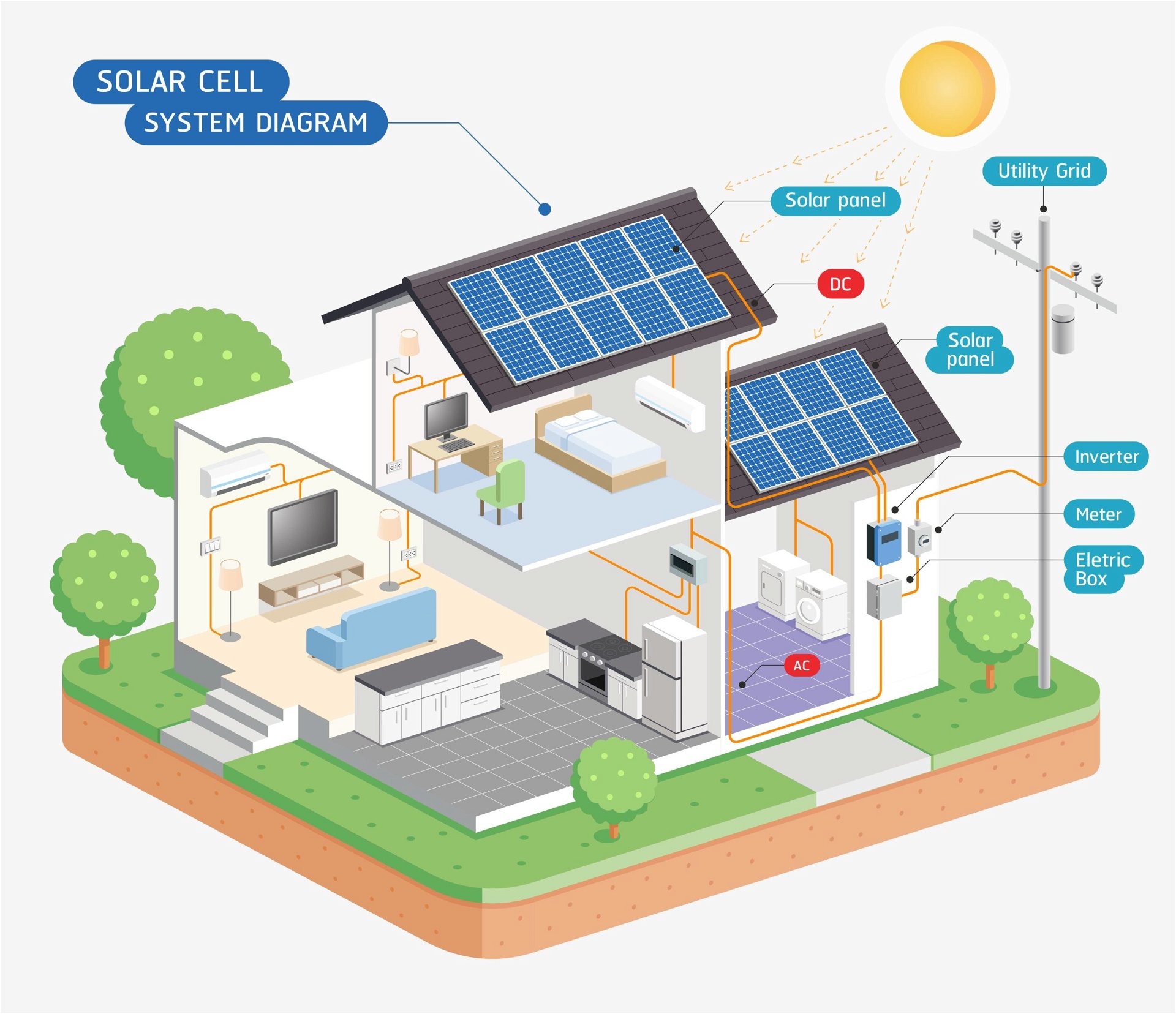Contents
10 Best Solar Feed-In Tariffs in New South Wales 2024
In this article, you'll find everything you need to know about solar feed in tariffs in NSW. From the top 10 best solar feed in tariffs to the top 3 solar plans, we’ve gathered the best of the best so you can find exactly what you need. Don’t get caught with a terrible feed in tariff. You could be missing out on a better rate than what you’re currently on. Give us a call now on 1300 232 848 as we can optimise your power bill, find you a fair deal on an energy plan, and more. Our energy experts are on standby waiting to help.
| Retailer | Minimum FIT (c/kWh) | Maximum FIT (c/kWh) |
|---|---|---|
|
Origin Energy
|
7.00 | 12.00 |
|
Energy Australia
|
7.60 | 12.00 |
|
Simply Energy
|
5.50 | 12.00 |
|
Red Energy
|
6.00 | 12.00 |
|
Globird
|
5.00 | 12.00 |
|
AGL
|
7.00 | 10.00 |
|
Sumo Energy
|
3.00 | 8.10 |
|
Momentum Energy
|
7.00 | 7.00 |
|
Alinta Energy
|
6.70 | 6.70 |
|
Dodo
|
6.20 | 6.20 |


3 Best Solar Plans in NSW 2024
New South Wales boasts a large number of competitive plans with each offering enticing solar feed in tariffs. Choosing the right plan however, goes beyond just the feed in tariff, which is why we cover important features of each solar plan including incentives, variable and fixed rates, and more. Please note that plans are subject to change. Any questions regarding plan specifics should be directed toward the retailer. Want to see if we can get you a better deal on your electricity? Call us on 1300 232 848 now.
Origin Energy - Solar Boost - 1st Place
Coming in 1st, we have the Solar Boost plan by Origin Energy. This variable rate plan includes zero exit fees, no lock-in contract, and competitive energy rates.
This solar plan has an attractive solar feed-in tariff of 12 cents per kWh and offers all-around value with its great rate. Even if you're buying power, the Solar Boost plan is still a cost-effective option.
Some features of this plan include:
- 12 cents per kWh
- Zero exit fees
- No lock-in contract
| Retailer | % Below DMO* | Price/year (Est.) |
|---|---|---|

Origin Solar Boost
|
0% | $1,827 |
*New South Wales electricity rates are based on usage of 3911kWh/year for a residential customer on a single rate tariff in the Ausgrid network, the DMO reference price is: $1,827 / year. Click here for more information.
Energy Australia - Solar Max - 2nd Place
In 2nd place, we have Energy Australia's Solar Max plan. This variable rate plan includes an attractive solar feed-in tariff of 12c/kWh and competitive energy rates.
Some features of this plan include:
- 12 cents per kWh
- May be eligible for discount
- Competitive FiT
| Retailer | % Below DMO* | Price/year (Est.) |
|---|---|---|

Solar Max
|
0% | $1,827 |
*New South Wales electricity rates are based on usage of 3911kWh/year for a residential customer on a single rate tariff in the Ausgrid network, the DMO reference price is: $1,827 / year. Click here for more information.
Simply Energy - Simply Solar - 3rd Place
Coming in 3rd place we have the Simply Energy plan by Simply Energy. This variable rate plan includes a boosted solar feed-in tariff of 12 cents per kWh, making it an attractive option for solar panel owners.
Some features of this plan include:
- 12 cents per kWh
- Zero exit fees
- Variable rates
| Retailer | % Below DMO* | Price/year (Est.) |
|---|---|---|

Simply Solar
|
16% | $1,535 |
*New South Wales electricity rates are based on usage of 3911kWh/year for a residential customer on a single rate tariff in the Ausgrid network, the DMO reference price is: $1,827 / year. Click here for more information.
Big 3 Solar Feed-In Tariffs in NSW 2024
In the table below, you’ll find the current solar feed-in tariffs in NSW for the ‘Big 3’ energy retailers: Origin Energy, EnergyAustralia, and AGL Energy. To learn more about the highest feed-in tariff rates in your area, phone us at 1300 232 848 or click on the button below to get ahold of one of our energy experts.
| Retailer | Minimum FIT (c/kWh) | Maximum FIT (c/kWh) |
|---|---|---|
|
Energy Australia
|
7.60 | 12.00 |
|
AGL
|
7.00 | 10.00 |
|
Origin Energy
|
7.00 | 12.00 |
Is Solar Right for Me?
If you’re new to the solar energy scene and want to set up a system for your home, there are several exciting incentives that you may be eligible for. For example, you can receive a number of rebates and benefits in the form of subsidies.
Two programs currently being offered in solar that you may be eligible for include:
- The Solar for Low Income Households Program; and
- The Empowering Homes Solar Battery Loan Offer.
Each of these programs offers benefits that can help reduce the cost of solar and make it more affordable for those looking to make the switch.
Another advantage of switching to solar power is an overall improvement in energy efficiency. Having a solar PV system installed means you don't have to rely on purchasing power from the grid. Instead, the power generated from your solar panels will help offset the cost and can even offer long-term financial benefits.
Lastly, with a solar PV system in place, you may be eligible to receive solar feed-in tariffs that vary based on the retailer. If you’re interested in learning more about solar feed-in tariffs, solar panels or setting up a solar PV system for yourself, phone us at 1300 232 848 today and one of our energy experts provide you with several free solar energy solutions.
What is a Solar Feed-in Tariff?
A solar feed in tariff is a rate that energy providers pay you for the excess energy produced by your solar system.
It doesn’t sound too bad, right?
The way solar power works is that it’s an energy source that needs to be used instantly.
The excess electricity produced gets shared back into the grid for a feed in tariff. You receive this as a credit payment on your electricity bill.
The solar feed in tariff is a rate that pays out a few cents per kilowatt-hour of electricity.
How Does it Work?

Solar panels absorb the sun’s rays using their photovoltaic cells (PV) and produce electricity via the photovoltaic effect.
The generated electricity is Direct Current (DC) and is not a usable form for your household’s electrical appliances.
Here’s where your solar inverter comes in handy!
Your solar inverter converts Direct Current electricity (DC) into Alternating Current electricity (AC), which is suitable for your home appliances.
The switchboard provides the flow of electricity to the appliances that require energy.
Additionally, the switchboard also directs any unused energy your solar power system produces back into the grid, earning you a feed-in credit on your electricity bill in the process.
This function is facilitated by installing a smart (bi-directional) meter that will simultaneously count the energy exported to and consumed from the grid.
Will I Save Money By Going Solar?
The transition to solar power in favour of energy purchased from the grid comes with a variety of financial benefits that can come in the form of a solar feed in tariff, lower energy bills, and more.
As you have probably heard, installing a solar system requires a sizable investment that differs based on the model you choose and other variables. However, they will typically pay themselves off anywhere from 5 to 6 years, and in some occasions even 4 years.
Payback periods for solar systems will vary according to your electricity usage habits and other variables so there is no universal formula that is applicable to all solar owners.
Overall, going solar is a good investment that can pay dividends in the long run. While solar energy can offer short term benefits, you should consider the lifetime savings that your solar system will provide – which can be substantial. Couple this with being generally self sufficient on renewable energy as opposed to buying power from the grid and this could be a great move for you.
Does it Make Sense to Get the Best Solar Feed in Tariff?
If you were to choose a solar plan; Would you pick the one with a high or low feed-in tariff?
The higher one, right?
But does that guarantee you more savings? Not necessarily.
Energy retailers may offer a solar plan with a high solar feed in tariff rate which is sure to catch your eye. But beware, as some of these plans might also have high electricity usage rates.
How do you know what solar feed-in tariff maximises your Return On Investment (ROI) and suits your electrical needs?
It depends on how you use your energy.
A solar plan with a higher feed-in tariff may be more beneficial to a household that exports a lot of excess energy. But for a household that relies heavily on energy from the grid, a sharper electricity rate and a moderate solar feed in tariff may be the answer.
It may sound complicated but don’t worry, we can help. At Electricity Monster, our energy experts can help find you competitive solar feed in tariffs and an energy plan that not only suits your personal and financial needs, but at the best rate we have in our system – at no cost to you. It’s that simple. Phone us today at 1300 232 848 today and let us help you get a fair deal at a fair price.
Can I Upgrade My Solar System?
Yes you can, and we can help. Many Aussies are upgrading to a battery storage system to help offset the costs of purchasing energy directly from the grid. One common concern many solar owners have before upgrading is whether they can afford it. We recommend giving us a call at Electricity Monster as we can offer advice regarding your current solar power system as well as what modifications can be made.
If you’re looking to upgrade, a scheme known as the Empowering Homes Solar Battery Loan offer is available to eligible NSW residents. This offer is designed to help homeowners in eligible postcodes access interest-free loans for a solar battery system. If you want to learn more about this rebate and additional incentives you may qualify for, give us a call on 1300 232 848 now, and our energy experts will analyse your current solar system to determine what you qualify for.
Minimum Feed-In Tariff (FiT)
You must be wondering what a minimum feed-in tariff is right?
Essentially it’s the minimum rate that retailers have to offer with their electricity plans.
It is important to note that solar customers need to take a close look at a solar plan’s feed in tariff rate to avoid falling into a bad deal.
Solar Feed-In Tariffs - The Verdict
By now, you should have a relatively decent understanding of solar energy and the feed in tariff rates that NSW electricity retailers have on offer. If you're interested in a solar system or installing solar panels, there's no better time than now.
Let’s not forget that a high solar feed-in tariff (FiT) is all well and good, but it may not necessarily give you the savings you were promised.
It’s all up to you! Choosing an electricity plan with a solar feed-in tariff depends on how you use your energy!
If you’re exporting enormous amounts of excess electricity to the grid, then the best option may be a plan with a higher feed-in rate. But for a household that buys more energy from the grid than it produces, a sharper energy rate and decent feed in tariff rate may prove to be more beneficial.
Well, there you have it. We’ve broken down everything you need to know about solar feed-in tariffs in NSW. Why not add FAST, FREE, and FAIR advice to that? At Electricity Monster, we’ll consider all factors and help you find a solar plan that suits your personal or professional needs. With over 135,000 Australians helped, we’re not only a brand you can trust, but we also have the experience to help you not only get a fair solar plan but also a competitive electricity & gas plan as well. Phone us at 1300 232 848 today.
Other Reads You Might Like
Disclaimer
This publication reviews solar feed-in tariff rates in NSW accurate as of 07/04/2024.
Important Points to note are:
- The plans displayed have been taken from the energy fact sheets published on the retailer’s website. We do not guarantee that this information is correct or that it applies to every household in Australia.
- Comparisons have been made on the peak rates in single rate plans from retailers, plus their daily electricity supply charges.
- The Citipower network has been used to compare electricity plans, and the Australian Gas network has been used to compare gas plans in Victoria.
- The Ausgrid network has been used to compare electricity plans, and the Jemena gas network has been used to compare gas plans in NSW.
- The SA Power Networks network has been used to compare electricity plans, and the Australian Gas network has been used to compare gas plans in Victoria.
- The Energex network has been used to compare electricity plans, and the Australian Gas network has been used to compare gas plans in QLD.
- The Evoenergy network has been used to compare electricity plans, and the Jemena gas network has been used to compare gas plans in the Australian Capital Territory (ACT).
- The ACTO network has been used to compare gas plans in WA.
- The reference price/VDO/GAS comparison will differ based on tariff type and location (distribution area). Your actual energy bill may be significantly different from these estimates if your usage differs from the average amounts used in this calculation.
- Solar feed in tariffs are calculated using c/kWh (cents per kWh)
- The “best" solar feed in tariff is subject to the rates currently listed on the retailer’s website. Solar customers should compare rate before assuming the best solar feed in tariff listed on this article is definitive.
- Electricity Monster does not sell solar systems but refer our clients to our partnered installers.
- The information in this blog cannot substitute for legal advice. No financial decisions should be made based on information from this blog.
- All dollar figures include GST.
- The plans displayed may be different than those advertised.
- The plans offered on this page may not be available in our call center.
- Get Best Offer’ is indicative of the best offer available in our database from our partners
Get a $50* Coles or Woolies Voucher
When You Call & Switch Today
- Compare Providers
- 100% Free Service
- Brokered Over 150,000 Deals

Get a $50* Coles or Woolies Voucher
When You Call & Switch Today
- Compare Providers
- 100% Free Service
- Brokered Over 150,000 Deals

Get a $50* Coles or Woolies Voucher
When You Call & Switch Today
- Compare Providers
- 100% Free Service
- Brokered Over 150,000 Deals

Get a $50* Coles or Woolies Voucher
When You Call & Switch Today
- Compare Providers
- 100% Free Service
- Brokered Over 150,000 Deals

Get a $50* Coles or Woolies Voucher
When You Call & Switch Today
- Compare Providers
- 100% Free Service
- Brokered Over 150,000 Deals

Get a $50* Coles or Woolies Voucher
When You Call & Switch Today
- Compare Providers
- 100% Free Service
- Brokered Over 150,000 Deals

Benjamin Tom
Benjamin Tom covers the retail energy market, with a focus on electricity, solar, and Internet. His interests include helping people navigate the complexities of the energy market while saving money on their power bills.




